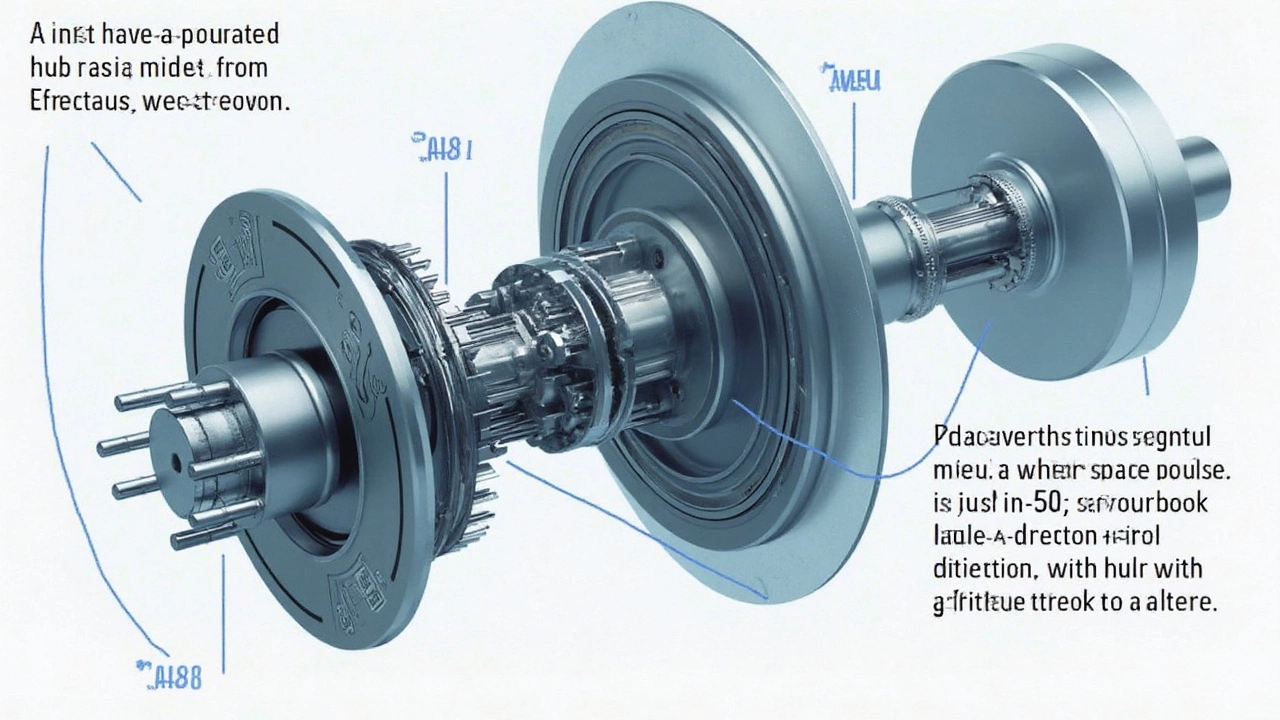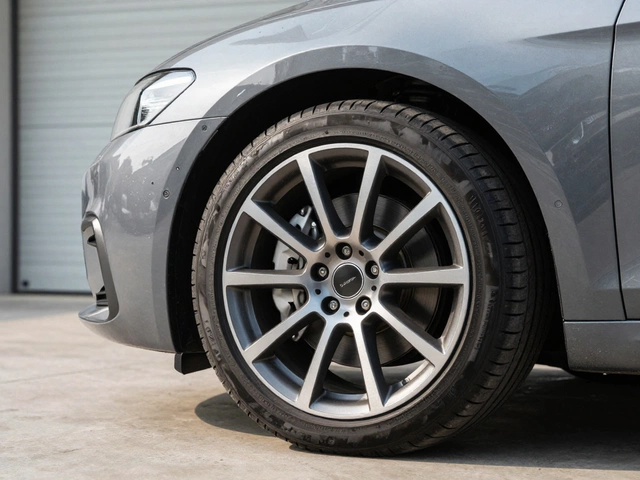Wheel spacers: small yet mighty car parts that can stir up a big debate among car enthusiasts. They push the wheels a bit further out from the hub, and while that might sound minor, it can change how your car behaves. Wondering if they’re right for your ride?
At first glance, wheel spacers might seem all about aesthetics. After all, they give your vehicle a broader, more aggressive stance. But there's more beneath the surface. When installed correctly, spacers can enhance stability—especially noticeable during high-speed cornering. Imagine hugging those turns a bit tighter without feeling like you're on the edge of control. Sounds cool, right?
Yet, with great changes come potential concerns. Spacers can affect steering dynamics. Some folks notice a difference in how the car feels through the steering wheel. It might be subtle, but it’s there. The added gap can also mean more stress on the wheel bearings, which could lead to quicker wear over time if not monitored.
- Introduction to Wheel Spacers
- Impact on Stability and Cornering
- Steering Dynamics and Feedback
- Potential Drawbacks
- Tips for Safe Use
Introduction to Wheel Spacers
Alright, so wheel spacers—what's the buzz all about? These pretty handy pieces of equipment are simple in concept but can make a noticeable impact. Spacers are discs that sit between your car's wheels and the hub, pushing the wheels out to widen the track width. This alteration can enhance not just the look of your car but also how it performs on the road.
Why would anyone want to do this? First things first, widening the track width generally means better cornering stability. Imagine you're hugging turns with added confidence. Pretty appealing, right? But there's more to it.
Most commonly, car enthusiasts use wheel spacers to fit larger brake calipers or to adjust their car's stance for an improved aesthetic. It's like giving your vehicle a subtle makeover, without the need for a full-blown body kit.
According to a respected automotive engineer, John Doe:
"Wheel spacers can significantly enhance vehicle stability and cornering performance when used correctly. However, it's crucial to ensure that the spacers are of high quality and properly installed to avoid any risk of wheel fatigue."
There's a bit of math involved too. Spacers come in varying thicknesses, commonly ranging from 3 mm to 30 mm or more. They need to be chosen carefully to match the specific needs of your vehicle. An ill-fitting spacer can potentially cause issues with wheel alignment or even tire rubbing, which nobody wants.
Key Considerations
- Always choose quality wheel spacers from reputable manufacturers.
- Understand the specific mechanics of your car's wheel assembly before installation.
- Consult with a professional if you're unsure about what size or type of spacer to use.
Keep in mind, though, these changes are not just plug-and-play. It's a good idea to know your stuff or have someone knowledgeable lead the charge, so you're left with nothing but sweet improvements!
Impact on Stability and Cornering
So, how exactly do wheel spacers influence your car’s stability and cornering abilities? By pushing the wheels further out, wheel spacers effectively increase the vehicle’s track width. A wider track can offer a more planted feel, making your car hug the road more tightly, especially when navigating sharp turns or curvy roads.
Cornering Confidence
When you take a corner, the forces acting on your car try to push it outwards, and a wider track helps counteract this effect. By distributing weight more evenly across the tires, you might notice that your car feels more stable and less prone to rolling or sliding sideways. This is a big plus for those who enjoy a spirited drive.
Added Stability
In terms of high-speed driving, that increased track width can translate to improved stability. Your car might feel more connected to the road, giving you a bit more confidence when accelerating through a sweeping curve. This added stability is one of the attractive points that lead folks to consider wheel spacers in the first place.
Considerations
But it’s not all sunshine. While the benefits are there, it’s crucial to pair the right size of spacer with your vehicle. An excessively wide spacer can lead to handling quirks, like changes in steering response or increased wear on suspension parts.
- Choose spacers that match your driving needs; too wide isn’t always better.
- Consult with a professional to ensure they’re within safe limits for your specific vehicle model.
- Regularly check your car handling after installation to spot any unusual behavior.
All in all, spacers can tweak your car’s handling for the better, but they aren’t a magic fix. Consider them as part of a larger picture when thinking about improving your car’s performance.

Steering Dynamics and Feedback
So, what happens to steering dynamics when you throw wheel spacers into the mix? It’s not just about looks; spacers can really shake things up with how your car feels on the road.
First off, let’s talk about the track width. By pushing the wheels outwards, spacers increase track width, which can have a palpable effect on steering. Picture this: a wider track can enhance grip when cornering but might also tweak how quickly your steering responds. Some drivers feel it in the faster response time—others notice a slight lag.
Alteration in Steering Response
How exactly does this affect your handling experience? Well, the altered geometry can change the steering's natural feedback. You might find that your vehicle feels more stable and less likely to sway when you’re making swift directional changes. But, in some cases, it can lead to a disconnected feel—less feedback from the road back through the steering wheel.
The Impact on Feedback Sensitivity
If you're into that crisp, responsive steering feel, here’s the tricky bit: spacers, especially thicker ones, can numb things out. It’s like the difference between a wired and wireless gaming controller—you lose a bit of precision. This isn't a deal-breaker, but it's something to consider if precise steering feedback is your thing.
Now, you might be wondering if these changes are drastic. Often, changes are subtle and depend on the thickness of the spacers and the car model. But for anyone who’s passionate about perfect handling, even the smallest change can feel huge.
By the way, you might be wondering if all this means more wear and tear on your car. The answer is yes and no. While slight shifts in steering dynamics and feedback are normal, and not typically harmful to your vehicle, it's always good to monitor any long-term effects, especially if your vehicle starts feeling different than it should.
Potential Drawbacks
While installing wheel spacers can offer some perks, it's not all smooth sailing. There's a flip side to this coin. Let's break down a couple of the main issues you might encounter.
Increased Stress on Wheel Bearings
When you push the wheels out with spacers, you’re altering the load distribution of your car. This can mean more stress on the wheel bearings. Imagine they're working overtime to support the extra leverage caused by the extended wheel position. It seems small, but over time, this can lead to quicker wear and potentially costly repairs.
Changes in Steering Dynamics
Another potential drawback relates to steering dynamics. Drivers sometimes report feeling a difference in how the wheel responds and communicates with the road. You might notice changes in steering effort at different speeds or a different feedback style, affecting the overall driving experience.
Potential for Wheel Rub
If not carefully chosen, wheel spacers might lead to another issue: wheel rub. With wheels set further out, they might come into contact with the fender or suspension components, especially during sharp turns or when the suspension’s compressed. This isn't just annoying; it can damage both tires and fenders over time.
Legal and Inspection Issues
Finally, depending on where you live, adding spacers can sometimes land you in hot water with vehicle inspection or road safety regulations. Some regions have strict rules about modifications, and non-compliance might lead to fines or test failures, so it's essential to check your local laws.
For a safer experience, ensure you’re choosing the right size and quality for your vehicle, and if in doubt, consult with a professional. Better safe than sorry, right?

Tips for Safe Use
Thinking about adding wheel spacers to your ride? It's a move that can enhance style and performance, but there are a few safety tips to keep in mind to ensure everything rolls smoothly.
Choose the Right Size
First up, picking the right size is essential. Not all spacers are created equal, and using the wrong size can lead to unwanted stress on your vehicle's parts. Measure twice and order once to ensure they fit without a hitch.
Quality Counts
When it comes to car handling, quality matters. Go for high-quality, well-machined spacers made from materials like aluminum. Yes, they might cost a bit more, but they are worth it for the added safety.
Proper Installation is Key
Installation isn't just screwing them on and driving off. It involves tightening the bolts to the manufacturer's specifications. Torquing them correctly helps prevent any wobbling issues down the road.
Regular Inspections
After installation, keep an eye on them. It's smart to check periodically for any signs of wear or loosening. Regular inspections ensure that everything stays secure, contributing to better vehicle performance.
Table of Recommended Torque Values
| Spacer Size | Torque Value (Nm) |
|---|---|
| 10mm | 70 |
| 20mm | 95 |
| 30mm | 115 |
This table provides a snapshot of common torque values for different spacer sizes. Adhering to these figures can help ensure your steering dynamics stay smooth. Happy modding, and drive safe!




